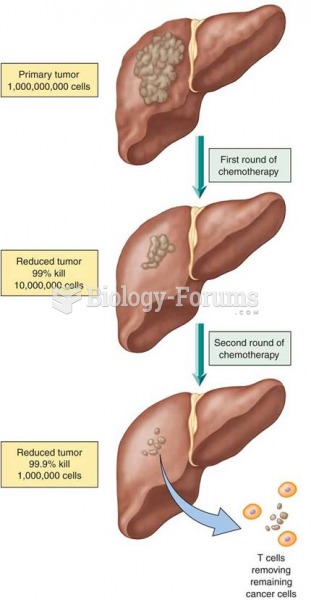Answer to Question 1
Mucositis
Sip warm tea slowly.
Eat chilled foods and fluids.
Eat soft foods that are moist and easy to swallow.
Eat small, frequent meals of bland, non-spicy foods. Avoid raw vegetables and fruits, and other hard or crusty foods such as chips or pretzels.
Avoid acidic fruits and juices, such as tomato, orange, grapefruit, lime, or lemon.
Avoid carbonated drinks.
High-calorie, high-protein milkshakes or nutritional supplements may be beneficial (Ensure, Boost, Resource, etc.).
Dysgeusia
Avoid metal utensils.
Use plastic utensils.
If meat is not tolerated, try peanut butter, cottage cheese, cheese, poultry, and soy meat substitutes.
Xerostomia
Rinse mouth with water and baking soda (-1 tsp in 8 oz water) every 2 hrs while awake.
Avoid mouthwashes that contain alcohol.
Brush with a very soft baby toothbrush.
Avoid tobacco, alcohol, coffee, and tea as these may exert a drying effect.
Increase fluid intake to assist chewing and swallowing.
Carry a water bottle and sip regularly throughout the day.
Limit foods that stick to teeth to cut back the risk of caries.
Use Chapstick and moisturizing gels on lips.
Dysphagia: Thickening agents may be necessary (readily available foods from the grocery store can be used as thickeners).
Odynophagia
Avoid hot foods (temperature); allow them to cool to room temperature.
Avoid rough foods like nuts, crackers, dry cereal, and raw fruits and vegetables.
Avoid spicy foods or acidic foods likes tomatoes, oranges, grapefruits, lemons, or limes.
Ice chips or a cool drink may soothe the pain.
Soft or pureed food, like applesauce, puddings, custards, mashed potatoes, cooked cereals, high-protein milkshakes, ice cream, ice milk, or sherbet, may cause less pain.
Drink liquids through a straw.
Avoid alcohol and tobacco.
Take small bites and chew food thoroughly.
Diarrhea
Drink small amounts of liquids frequently throughout the day (avoid excessive fruit juice)
Increase intake of foods high in soluble fiber (this may conflict with anorexia and meeting adequate amounts of oral intake)
Answer to Question 2
The dawn phenomenon is the tendency for blood glucose to rise between 4 am and 8 am. This is fairly common for T1DM and over 55 of patients are likely to experience the dawn phenomenon. This occurs because of impaired insulin sensitivity in muscle and liver cells from nocturnal secretion of growth hormone due to circadian rhythms. This increases the production of glucose and hyperglycemia results. Also, poor glucose control is related to high and more frequent changes to blood glucose levels. Patients experiencing the dawn phenomenon have an increase of blood glucose >10 mg/dL or an increased insulin requirement of 20 during these hours of the night.
Because Rachel's blood glucose is dropping low and then is running high by the morning, she is not experiencing the dawn phenomenon, but rather rebound. Rebound also results in high fasting blood glucose, but for a different reason. Along with Rachel treating the 2 am hypoglycemia with 15 grams of carbohydrates orally, her body is naturally treating the hypoglycemia by the increased secretion of counter-regulatory hormones, such as glucagon, epinephrine, and growth hormone/cortisol. These increase gluconeogenesis from lipids and proteins, causing more glucose to be secreted into the blood, further raising Rachel's blood glucose. To prevent this from happening, Rachel should check her blood sugar before going to bed, as well as in the middle of the night. She can also decrease her evening insulin dosage or increase the amount of carbohydrates in her bedtime snack. Either of these steps will keep hypoglycemia from occurring and avoid the promotion of glucose production by counter-regulatory hormones.







